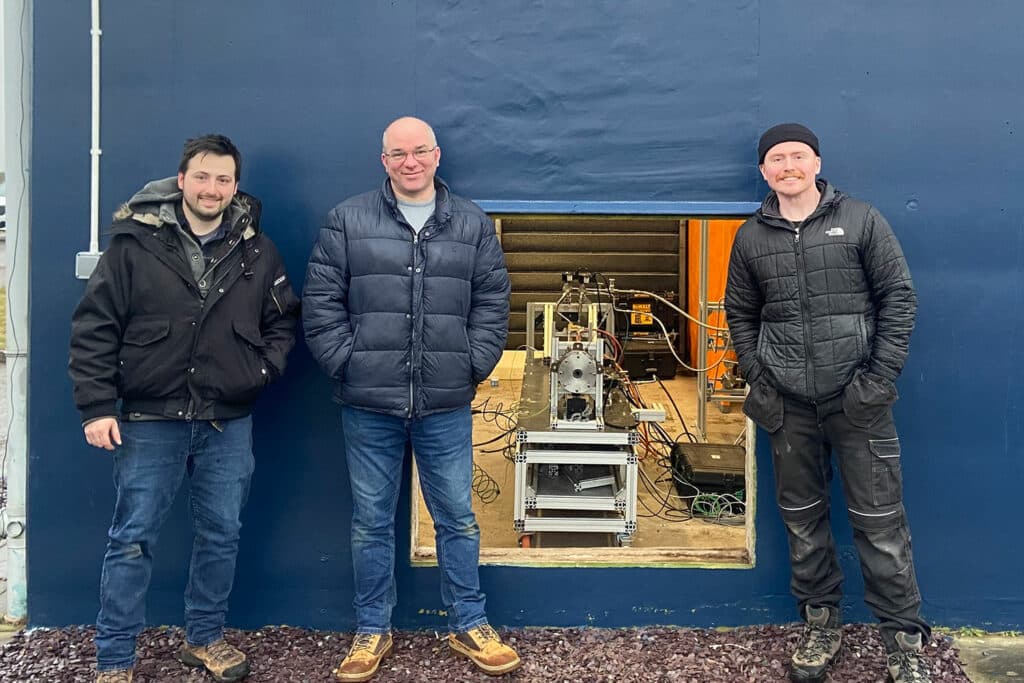Advances in technology are pushing the boundaries of space exploration. The idea of a 'self-feeding' rocket engine capable of flying beyond Earth's atmosphere sounds like something out of a science fiction movie, but it could have real-world applications in the space industry.
Engineers at the University of Glasgow have successfully built and fired the first unsupported 'autophage' rocket engine that consumes its own body parts for fuel. This technology could offer many advantages over conventional rocket designs and help make a big impact on the UK space industry.
The autonomous engine uses waste heat from combustion to continuously melt its own plastic fuselage as it fires. Molten plastic is injected into the engine's combustion chamber as additional fuel to burn along with its regular liquid propellants.
This means that an autophagy vehicle would require less propellant in internal tanks, freeing up mass for payload allocation. In addition, the consumption of the fuselage will help solve the problem of space debris – debris orbiting Earth and hampering future missions.

The higher efficiency of autonomous rockets will enable them to carry more payloads into space compared to conventional rockets of the same mass. This means that small nanosatellites can be launched into space without having to share space on more expensive conventional fuel rockets.
The concept of a self-feeding rocket engine was first proposed and patented in 1938. However, a research partnership between the University of Glasgow and Dnipro National University in Ukraine reached the milestone. controlled method.
Now, with support from Kingston University, Glasgow engineers have demonstrated that using high-energy liquid propellants, a plastic fuselage can withstand the forces required to feed it into the engine. These are essential steps to creating a viable flight concept.
According to Paper, the team was able to successfully conduct a test fire of their Ouroborous-3 automatic engine, which developed 100 Newtons of thrust. Tests were carried out in a controlled environment at the MachLab facility at Macrihanish Airbase.
The Ouroborous-3 engine uses high-density polyethylene plastic tubes as its autonomous fuel source, which is combusted with the rocket's primary propellants, which include gaseous oxygen and liquid propane.
Test results indicated that the Ouroborous-3 engine was capable of sustaining a sustained burn during the autophagy phase, a critical requirement for any rocket engine. Additionally, the plastic fuselage was shown to provide up to one-fifth of the total propellant used.
Recent tests have shown that the rocket's combustion can be successfully controlled. Not only did the rocket effectively stop burning, it restarted and pulsated on/off. These capabilities will be useful in helping future autophagy rockets control their ascent from the launch pad to orbit.
„These results are a fundamental step on the path to developing a fully functional autonomous rocket engine.” said Professor Patrick Harkness, who led the development of the Ourouboros-3 autophagy machine. „Those future rockets could have a wide range of applications, helping to advance the UK's ambitions to become a major player in the space industry.”
„The structure of a typical rocket is between five and 12 percent of its total mass. Our tests show that Ouroborous-3 can burn its own structural mass as propellant. If it could instead make at least that mass available for payload, it would be a compelling option for future rocket designs.
Development of the team's autonomous vehicle will continue with the support of new funding from the UK Space Agency (UKSA) and the Science and Technology Facilities Council (STFC), part of UK Research and Innovation (UKRI).

„Oddany rozwiązywacz problemów. Przyjazny hipsterom praktykant bekonu. Miłośnik kawy. Nieuleczalny introwertyk. Student.
